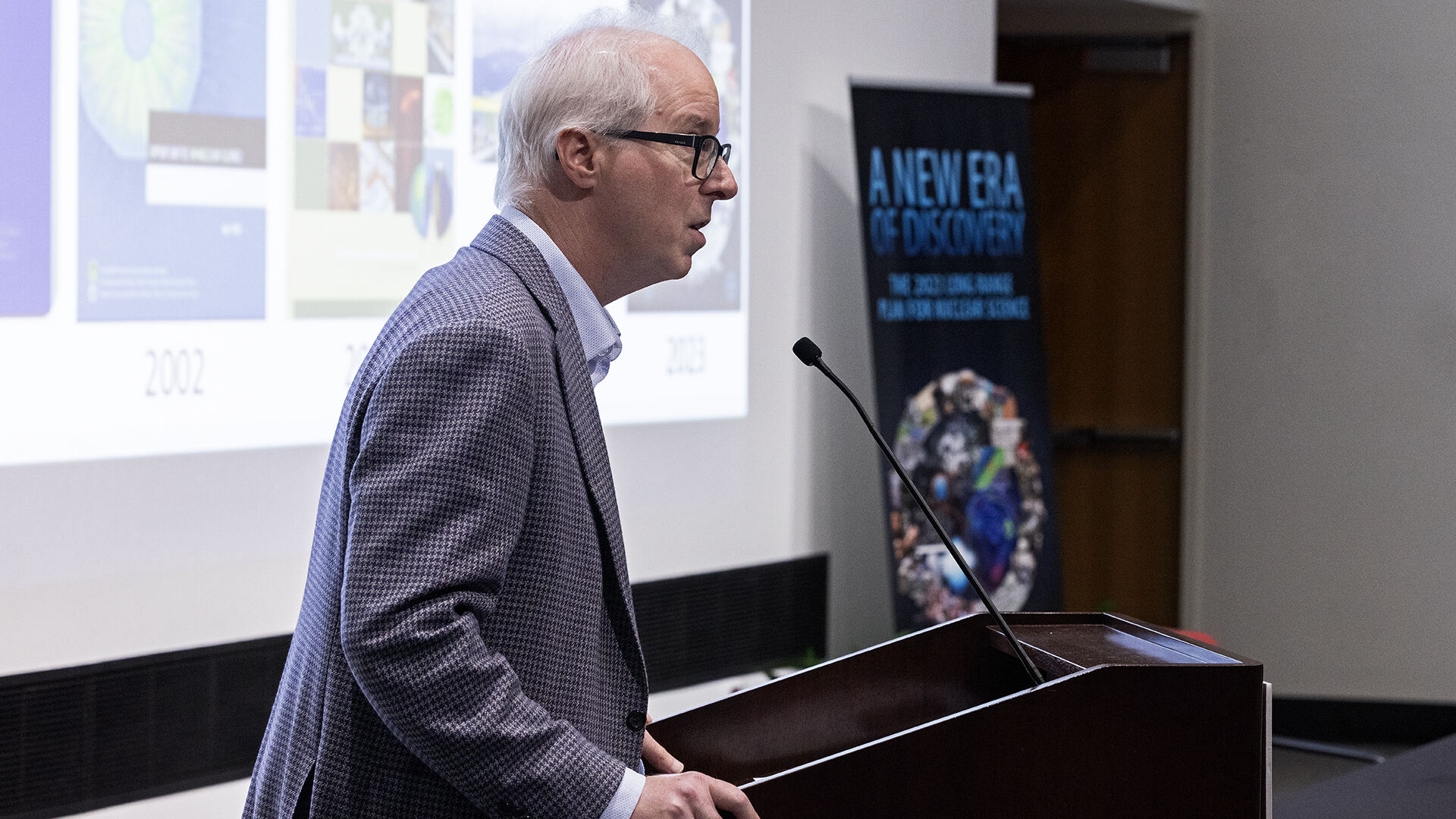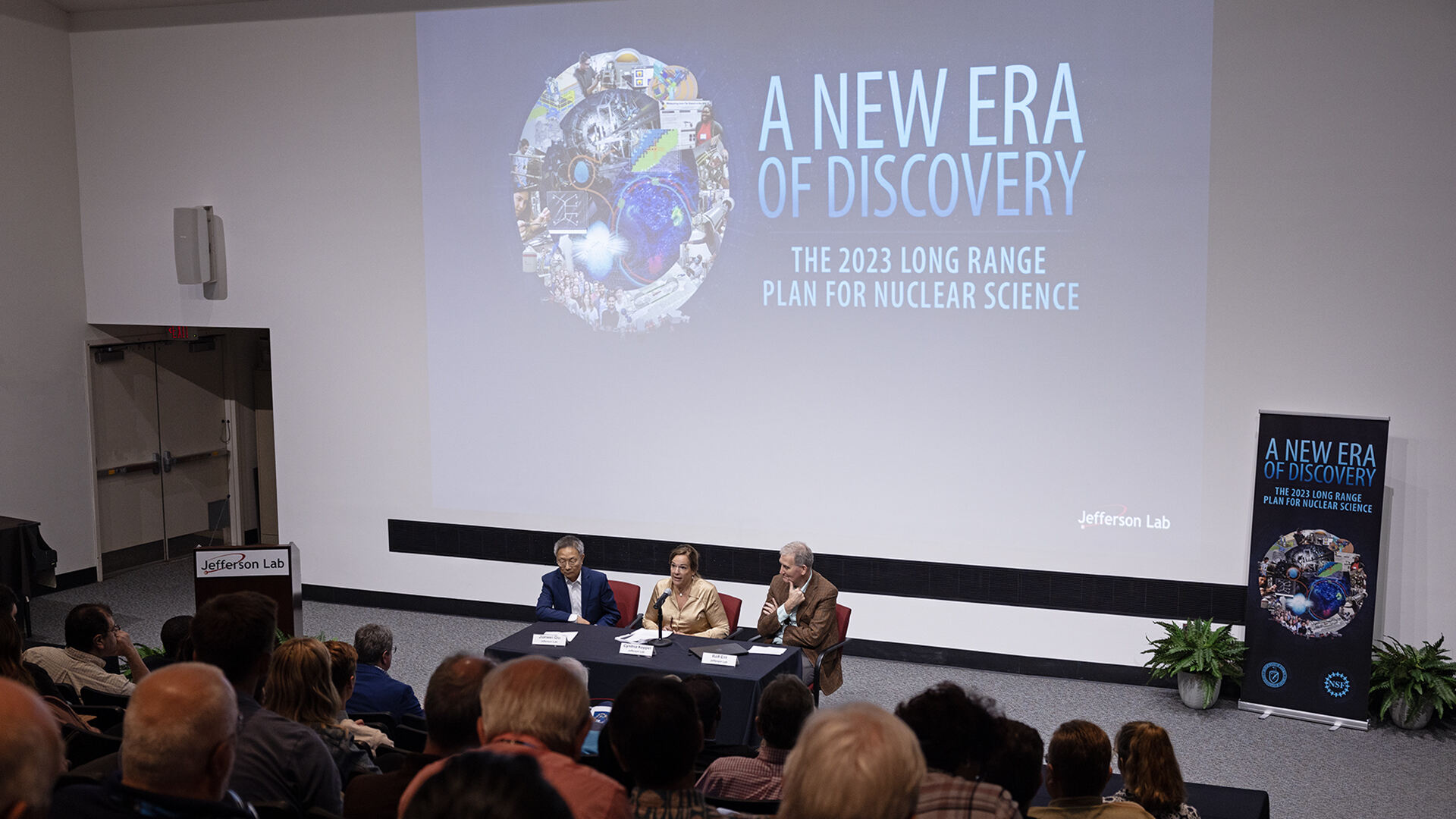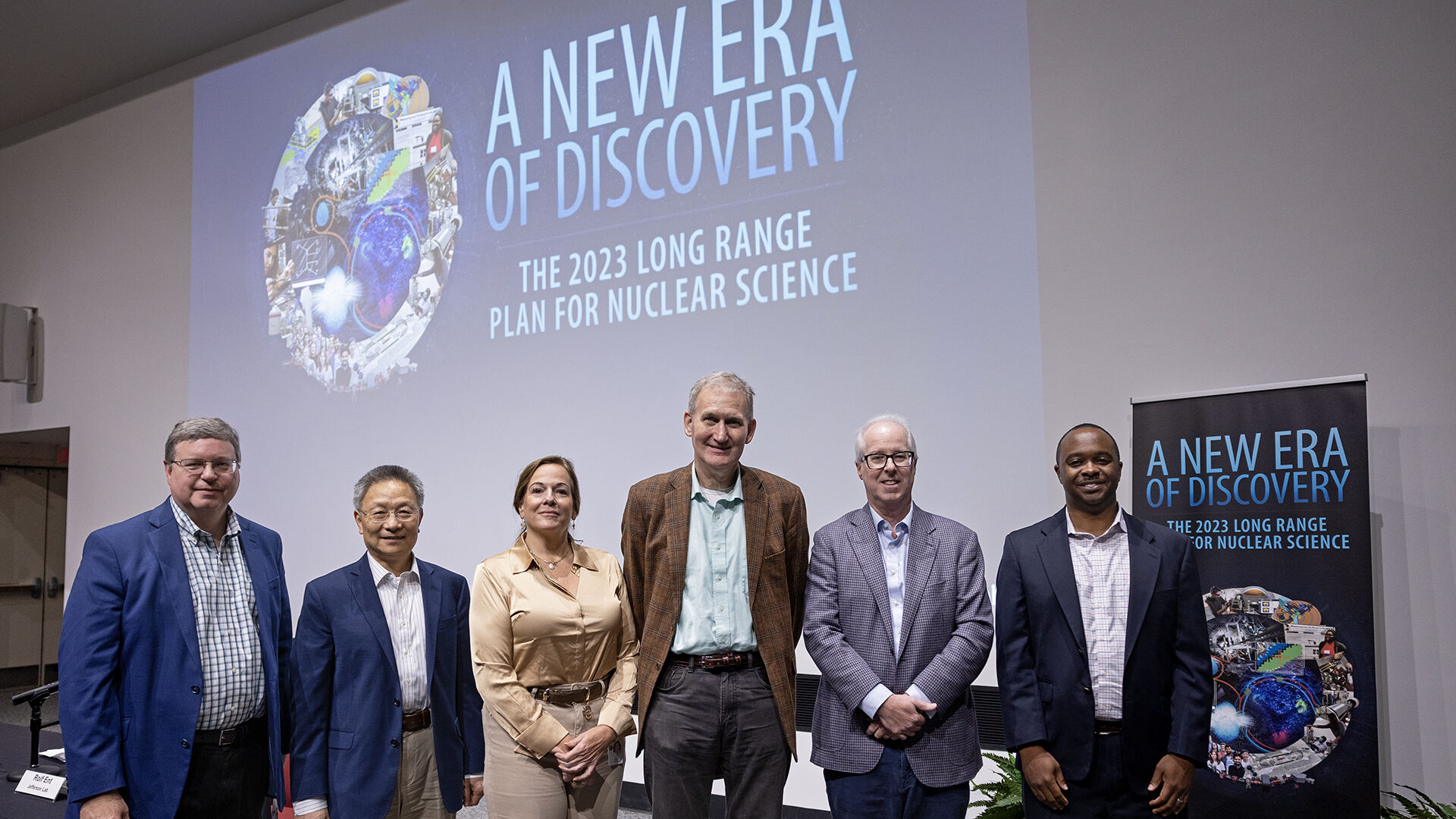A national committee of eminent nuclear physicists have published recommendations on the next decade of research in nuclear science
NEWPORT NEWS, VA – Staff and scientific users affiliated with the U.S. Department of Energy’s Thomas Jefferson National Accelerator Facility came together on Friday for the rollout of “A New Era of Discovery: The 2023 Long Range Plan for Nuclear Science.” The document includes recommended research priorities for the next decade in nuclear physics.
The rollout event included an address by the chairperson for the Nuclear Science Advisory Committee (NSAC), Gail Dodge. Dodge is a nuclear physicist and Dean of the College of Sciences at Old Dominion University. In her address, she discussed the details of the newly released long range plan and took questions from the virtual audience.
The new plan was unanimously accepted and made public on Wednesday by NSAC, a committee composed of a diverse group of expert nuclear scientists who have been tasked by DOE and the National Science Foundation (NSF) to provide recommendations on future research in the field. The plan, which serves as advice to both DOE and NSF, is generally prepared every five-eight years to articulate the opportunities and priorities for United States nuclear physics research.
The presentation was followed by speakers from Jefferson Lab, who described potential impacts of the new plan on the experimental and theoretical programs at Jefferson Lab and on Electron-Ion Collider project work underway at the lab.
“We welcomed this opportunity to engage with our nuclear physics colleagues in discussions about the future directions of our field,” said David Dean, Jefferson Lab’s deputy director for science and chief research officer. “And we are proud to support nuclear science with the unique capabilities of CEBAF, the Continuous Electron Beam Accelerator Facility, and our core capability in cryogenic superconducting radio-frequency accelerator technologies.”
CEBAF is a DOE Office of Science national user facility that supports the research of more than 1,850 nuclear physicists worldwide.
One feature of the nuclear science long range plans are their recommendations for future research directions. The top recommendation gives highest priority to capitalizing on “the extraordinary opportunities for scientific discovery made possible by the substantial and sustained investments of the United States.”
This recommendation addresses both increasing the research budget to advance the science program and its discovery potential and continuing effective operation of the national user facilities, including CEBAF at Jefferson Lab, Argonne National Lab’s Argonne Tandem Linac Accelerator System (ATLAS), Michigan State University’s Facility for Rare Isotope Beams (FRIB), and Brookhaven National Lab’s Relativistic Heavy Ion Collider (RHIC). Argonne and Brookhaven labs are DOE facilities, and FRIB is operated on behalf of DOE by MSU.
At Jefferson Lab alone, there’s nearly a decade of reviewed and approved research, with more experiments submitted every year. CEBAF experiments investigate Quantum Chromodynamics (QCD), the theory that describes how particles called quarks and gluons build protons, neutrons, and nuclei. CEBAF’s primary experimental focus is on understanding the nature of valence quarks within the proton. The plan describes possible future upgrades to CEBAF that would open new vistas of research into the structure and dynamics of quarks that make up protons and neutrons, and the addition of a new detector capability at CEBAF, called SoLID, which will capitalize on CEBAF’s extremely high luminosities.
The second recommendation addressed the highest priority for new experiment construction, a U.S.-led consortium that “will undertake a neutrinoless double beta decay campaign, featuring the expeditious construction of ton-scale experiments, using different isotopes and complementary techniques.”
In its third recommendation, the committee described completion of the Electron-Ion Collider “as the highest priority for facility construction.” The EIC will be a unique facility constructed at Brookhaven National Lab to investigate the gluons that hold quarks together within protons. JLab is a major partner in the development of the EIC, contributing to both its accelerator and detector construction, and is a leader in its science program. An Electron-Ion Collider aims to provide new capabilities to fully investigate the gluons described by QCD.
The last recommendation involves capitalizing on nuclear physics’ unique research and development opportunities that can both “advance discovery science and applications for society by investing in additional projects and new strategic opportunities.”
“Jefferson Lab appreciates the hard work of scientists across the nation to develop the new Long Range Plan for nuclear science. The lab looks forward to working with the nuclear science community and the DOE as we begin its implementation.” Dean said.
Further Reading
A New Era of Discovery: The 2023 Long Range Plan for Nuclear Science
Contact: Kandice Carter, Jefferson Lab Communications Office, kcarter@jlab.org




